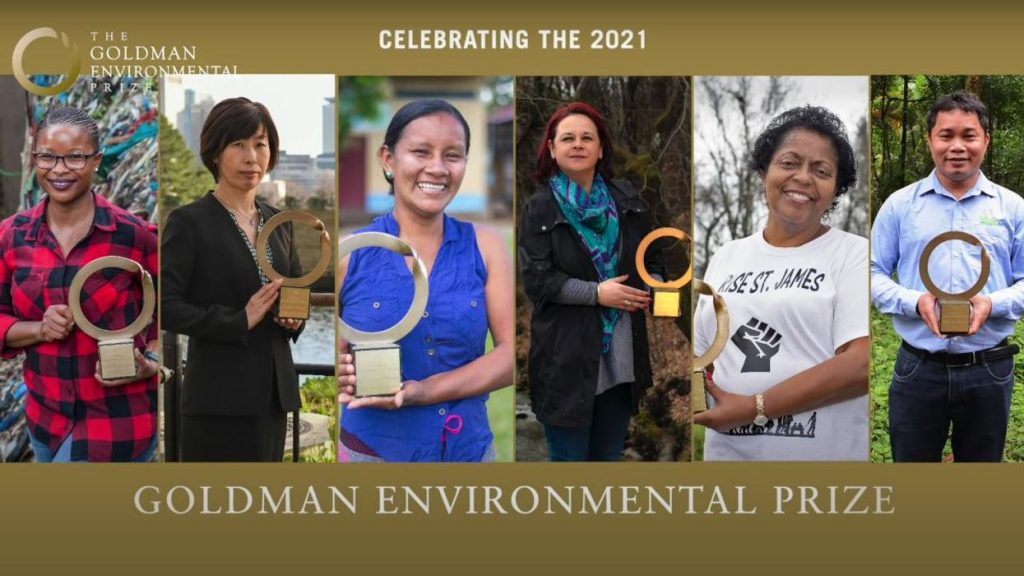Context:
Alok Shukla has been awarded the 2024 Goldman Prize from Asia for his efforts to save the forests of Hasdeo Aranya in Chhattisgarh.
More on the News
- Alok Shukla is the convenor of Chhattisgarh Bachao Andolan and founding member of Hasdeo Aranya Bachao Sangharsh Samiti.
- The Goldman Environmental Foundation, which gives away the prize, recognised that the Hasdeo movement’s ability to successfully influence policy has made it a model for environmental justice in India and generated an unprecedented amount of national and regional solidarity.
About the Goldman Prize
- The Goldman Environmental Prize is awarded by the Goldman Environmental Foundation.
- The Prize was founded by Richard and Rhonda Goldman in 1989 as a way to demonstrate the international nature of environmental problems and draw public attention to the global need for action.
- The first Goldman Environmental Prize was awarded in April 1990.
- It recognises grassroots environmental leaders from six regions — Asia, Africa, Europe, North America, South & Central America, and Islands & Island Nations.
- The Prize views “grassroots” leaders as those involved in local efforts, where positive change is created through community or citizen participation. Through recognizing these individual leaders, the Prize seeks to inspire other ordinary people to take extraordinary actions to protect the natural world.
- The winners are selected by an international jury and awarded $200,000 as prize money.
About Alok Shukla & his Achievements
- Alok Shukla is the convenor of Chhattisgarh Bachao Andolan (the Save Chhattisgarh Movement), an informal alliance of grassroots movements across Chhattisgarh. The alliance is member-driven, without any paid employees.
- He is providing legal advice and awareness to communities affected from mining process since 2011.
- His leadership brought villages and local communities together in a unified movement that emerged in 2012 with the creation of the Hasdeo Aranya Bachao Sangharsh Samiti (Save Hasdeo Aranya Resistance Committee), a grassroots movement uniting forest-dwelling villagers across the region.
- In October 2020, he led local villagers to lobby the village legislative councils to designate 945,000 acres as the Lemru elephant reserve, protecting the elephant corridor and its boundaries from planned coal mines.
- Due to his sustained efforts, the state legislature adopted a resolution in July 2022 against mining in the entire Hasdeo Aranya region and demanded cancellation of any existing allocations.
Hasdeo Aranya forest
- Spread across approximately 1,878 sq km in Korba, Sujapur, and Sarguja districts, it’s the largest unfragmented forest in Central India.
- The forest is a vital ecological zone and is often referred to as the “lungs of Chhattisgarh” due to its rich biodiversity and role in maintaining air quality.
- The forest is an important source of livelihood, cultural identity, and sustenance for nearly 15,000 Adivasis.
- However, this forest area is located on top of one of India’s largest coal reserves, which is estimated to be about 5.6 billion tons.
- In 2010, the Union Ministry of Environment, Forest & Climate Change declared the Hasdeo Aranya forests a “no-go” zone in recognition of its vast biodiversity.

Ecological Importance:
- Biodiversity Hotspot: Hasdeo Arand boasts pristine Sal (Shorea robusta) and teak forests, providing habitat for a diverse range of flora and fauna.
- The ancient forests provide a critical tiger corridor linking neighbouring sanctuaries and habitat for approximately 50 endangered Asian elephants.
- Elephant Corridor: It serves as a crucial migratory corridor for elephants, essential for their long-term survival and gene flow.
- Catchment Area: The Hasdeo River, a tributary of the Mahanadi, flows through the forest. This river system provides water for irrigation, domestic consumption, and industrial use in the region.
- The Hasdeo Bango Dam, built on the Hasdeo River, depends on the forest for maintaining water quality and regulating water flow.
Also Read:
Earliest Evidence of Earth’s Magnetic Field Found in Ancient Rocks

